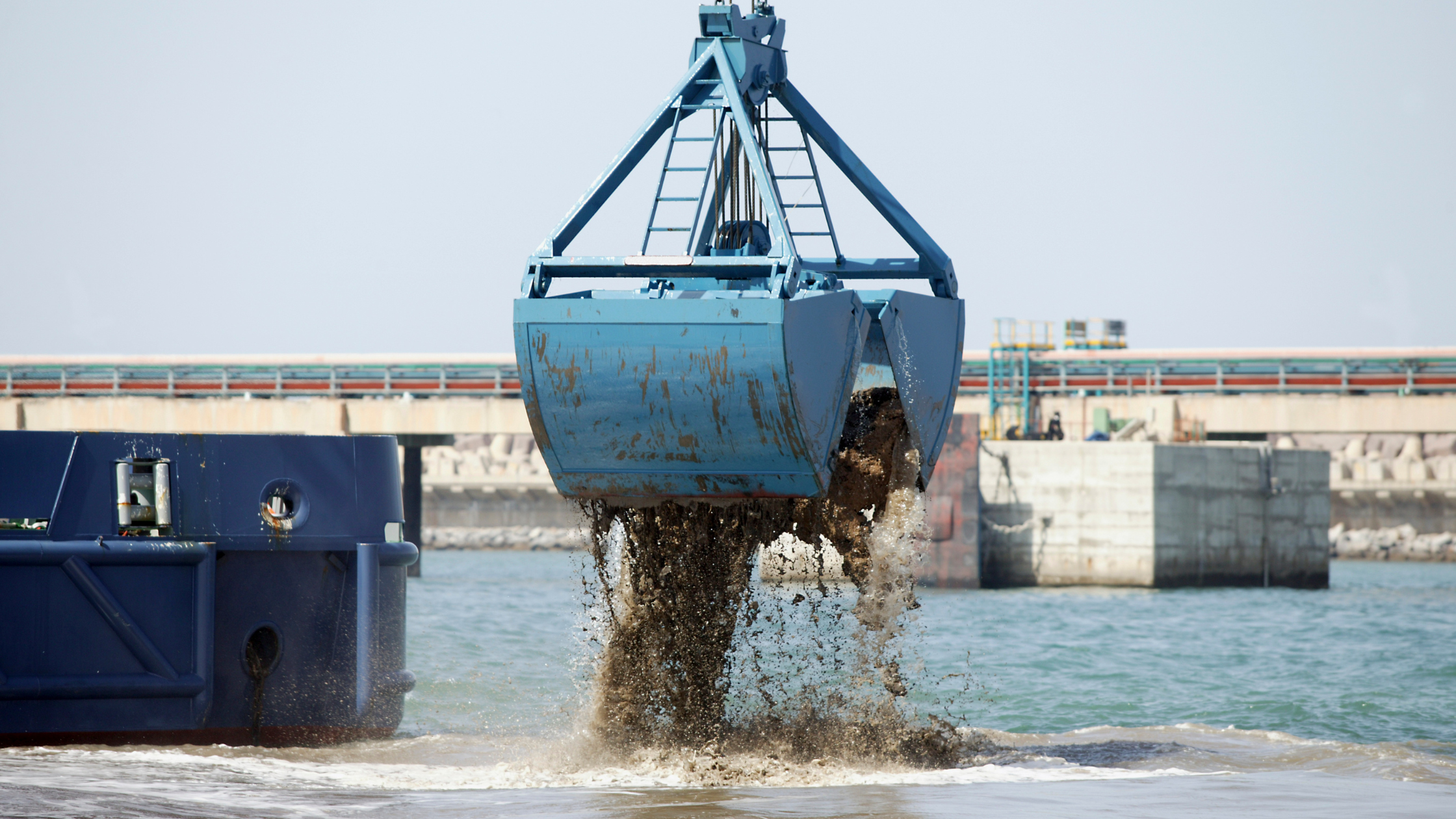
Vast sand dredging industry ‘sterilising’ the ocean floor
What’s happening? An estimated 6 billion tonnes of sand are being dug up from the ocean every year, posing a threat to coast communities at risk of rising sea levels and marine biodiversity, according to data from a recently launched platform developed by the UN Environment Programme (UNEP) and GRID-Geneva. Marine Sand Watch uses AI to track the movement of dredgers from automatic identification systems (IAS) data provided by Global Fishing Watch. It found the east coast of the US, the North Sea and Southeast Asia were areas of concern. In several locations where dredging is particularly intense, sand is often being removed faster than it can be naturally replenished. (The Guardian)
Why does this matter? Sand stands as the second most utilised natural resource globally, trailing only behind water. Each year, approximately 50 billion tonnes of sand and gravel are consumed – a quantity substantial enough to construct a wall measuring 27 meters in height and 27 meters in width, encircling the entire Earth. Sand assumes a pivotal role in our daily lives and economic progress, serving as an indispensable ingredient in the production of concrete, asphalt, glass, silicon chips, and playing vital roles in land reclamation and flood protection efforts. Furthermore, it plays a crucial role in facilitating the construction of the extensive infrastructure necessary for the transition to cleaner energy sources.
Unknown replenishment rate – UNEP’s data spanning from 2012 to 2019 reveals a concerning trend: dredging activities are on the rise. Every year, coastal and marine ecosystems depend on an essential influx of 10 to 16 billion tonnes of sand from the land. Currently, global sand dredging is approaching this critical replenishment rate. Predictions indicate that factors such as the expanding global population, urbanisation, poverty reduction efforts, and the increasing demand for new infrastructure like roads and buildings will necessitate an astonishing 60 billion tonnes of sand and gravel annually by 2030. Focusing on the construction sector specifically, estimates suggest that the demand for construction-grade sand will surge from 3.2 billion tonnes in 2020 to 4.6 billion tonnes by 2060, marking a substantial 45% increase.
According to a 2022 UNEP report, it’s important to recognise that global sand reserves remain largely unknown, and assuming the resource’s abundant availability would be a mistake. Shortages are presently emerging due to disparities in the geographical distribution of resources, as well as variations in quantity and quality at regional sites, creating a substantial threat to supply chains. Furthermore, there’s a rising competition for extraction sites, and numerous regions are implementing restrictions, often in the name of nature conservation, further complicating the situation.
Irreversible marine damage – Extracting sand not only strains the global supply but also leaves areas of the seabed “sterilised” through the removal of microorganisms vital to marine ecosystems. In some cases where sand is stripped down to the bedrock “life may never recover”, according to UNEP’s Pascal Peduzzi. Dredging affects marine wildlife in various other ways including collisions, noise levels and topology.
Industries harmed – Excessive sand extraction also threatens local industries. For example, UNEP emphasises that removing sand from beaches can inhibit the development of tourism, which is integral to both local and national economies. Additionally, mining sand from rivers can result in the loss of livelihoods, including tourism and fishing. An example of this can be seen on the riverbanks along the Mekong and Bassac rivers in Cambodia, which have been collapsing, forcing residents to leave their homes.
Regulatory oversight – Sand extraction is unregulated or under-regulated in many parts of the world. Just a handful of countries know how much sand is being extracted each year, what it is used for and how it impacts the environment or socio-economic issues. In addition to limited legislation, a lack of data can drive illegal, informal, and unregulated sand mining, which harms the environment and negatively impacts society.
Solutions – UNEP has called for new legislation to more effectively govern sand and for resources of the material to be mapped, monitored and reported on. Solutions already exist, such as creating a circular sand economy, including banning the resource from landfills and encouraging reuse in public procurement contracts. Recycling construction and demolition materials are also potential alternatives to sand, as is ore-sand resulting from the mining and processing of ores.


